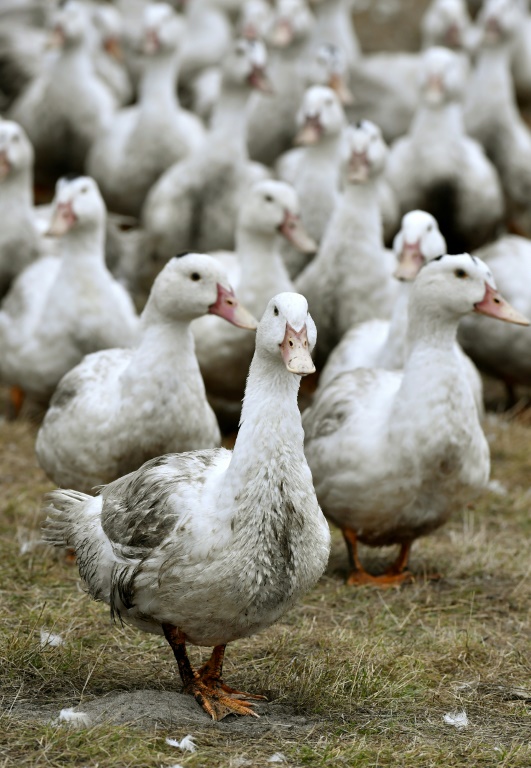At the GAEC of the Paillet duck farm in Labarthète in the Gers on October 2, 2023 (AFP/Archives/Valentine CHAPUIS)
The production of foie gras increased by 20% in France in 2023, after a catastrophic year 2022 marked by massive slaughters of ducks linked to avian flu, the foie gras inter-profession Cifog announced on Thursday, which is counting on vaccination to ” turn the page”.
“Foie gras is regaining color, it’s a relief” after an uninterrupted three-year episode of avian influenza, declared Marie-Pierre Pé, director of the Interprofessional Committee for Foie Gras Palmipeds (Cifog), during a press conference in Paris.
Production of duck foie gras is expected to reach more than 9,800 tonnes in 2023, an increase of 20% compared to 2022, a year of “historic decline”.
“Over the last ten years, foie gras production has paid a heavy price to avian influenza, losing 50% of its volumes (18,600 tonnes in 2013),” according to Cifog.
After an increase in prices of more than 15% last year during the end-of-year holidays, the profession estimates that the increase this year will be “around 5%” on supermarket shelves.
Although increasing, volumes remain reduced: “The offer will be approximately equivalent to that of last year in stores, due to low stocks,” explained Marie-Pierre Pé.
After an unprecedented crisis (32 million poultry slaughtered since the summer of 2021), the government has decided to make vaccination compulsory in farms of more than 250 ducks, excluding breeding ducks, to try to stop its spread.
“To date, it is estimated that 10% of the 64 million ducks concerned have been vaccinated,” said Ms. Pé.
The cost of this vaccination campaign is estimated at 100 million euros, 85% of which is covered by the State, the rest being covered by professionals.
– “Genetic treasure” –
This initiative, which breeders hope will put an end to massive preventive slaughters, is unique in the world, France being the only country to have committed to this approach despite the obstacles to exports it implies.

Ducks confined on a farm located approximately 10 kilometers from the southwest area affected by avian flu in Bourriot-Bergonce in the Landes, February 22, 2017 (AFP/Archives/GEORGES GOBET)
Vaccination is a reason for distrust for certain countries who fear that the virus will circulate quietly on farms. Japan, which was the leading export market for French foie gras outside the European Union, has suspended all its imports.
“The turnover of the sector in a year without influenza is between 1 and 1.5 billion euros. Export represents 10 to 15% of volumes and 100 to 120 million euros in value . In 2022, the export figure fell to 80 million euros,” detailed Victor Guyon, Cifog export manager.
“We had to react to save the sector. In 2022, 80% of the breeding (ducks) in the sector will have disappeared,” explained Eric Dumas, president of Cifog and himself a fat duck breeder in the Landes.
“Our war chest is partly genetic,” he insisted, explaining that the sector had reacted by relocating part of the production, in particular to “deconcentrate” the farms and only very gradually increase the return of ducks. on farms, after a long period of “crawl space”.
After having heavily affected the South-West in 2021, the virus spread in 2022 for the first time in Pays-de-la-Loire, in a basin which concentrates 100% of breeding ducks and “more than 70% of ducklings intended for the foie gras sector in France”, according to Cifog.
France regained its “bird flu free status” on August 14, 2023.
© 2023 AFP
Did you like this article ? Share it with your friends using the buttons below.




